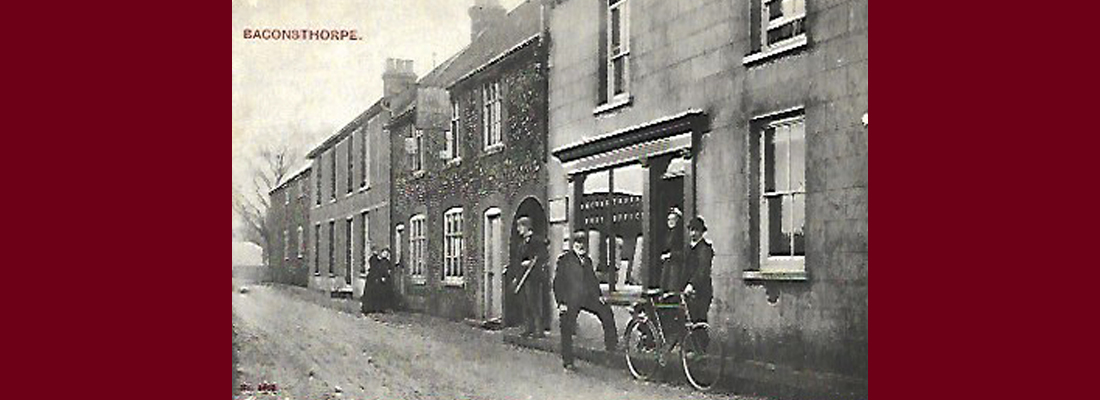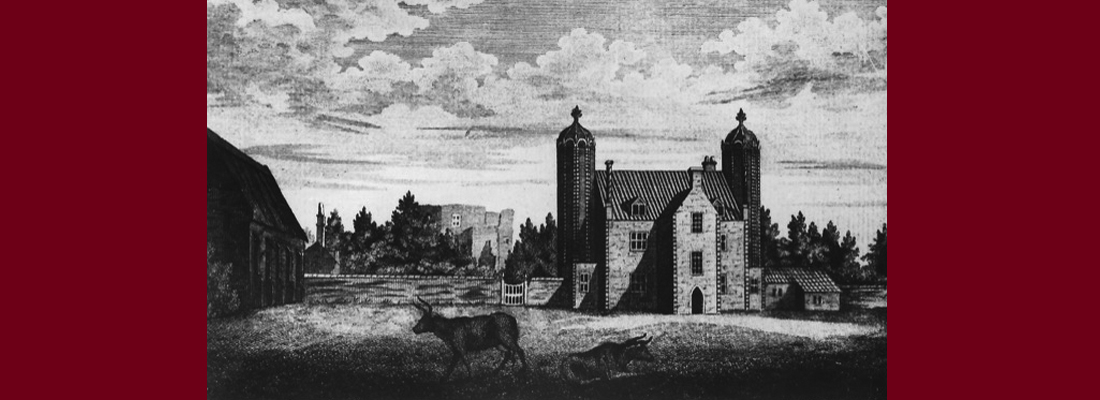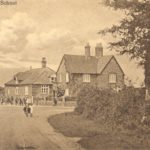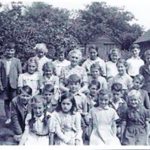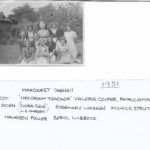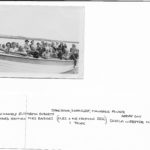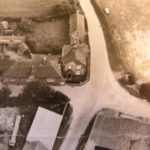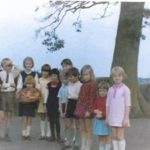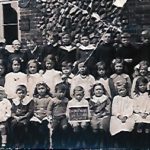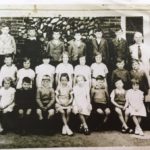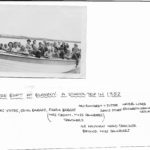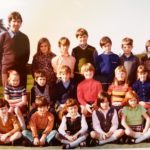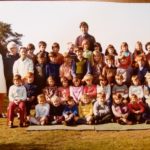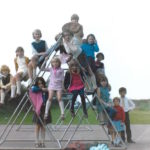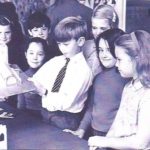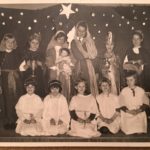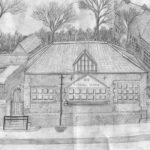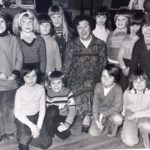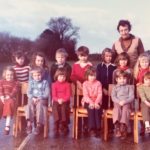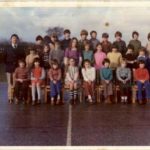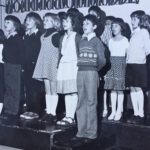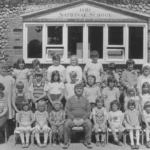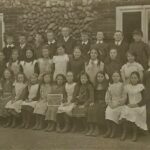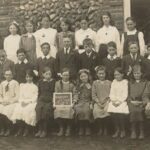St Mary’s Church History
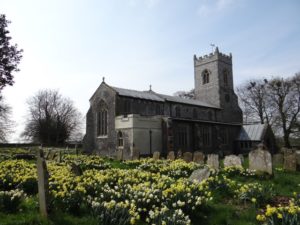
St Mary’s Church Pamphlet
Download PDF
The history of St Mary’s Church was written by Richard Youngs in 1972 and up-dated by Emma Youngs in 2018.
The printing of this pamphlet has been funded by the Heritage Lottery Fund and is available in hard-copy from the church. It can also been downloaded here as a pdf by clicking the link above.
According to the Doomsday Book of 1086 there was a church in Baconsthorpe attached to one of the Lordships which belonged to Robert Grenon and was endowed with 30 acres of land, 80 sheep and 40 goats. The church is a large building of flint and freestone. White flints have been knapped and squared and laid in courses, these are intended to reflect the early morning and late evening sunshine which will catch the eye from a distance. The earliest parts of the church date from the 13th century and stand on Saxon foundations. Two of the arcades in the nave nearest the chancel are of the decorated style used between 1290-1350.
To see the list of Rectors from St Mary’s Church please click here.
The Rectory
In 1692 the rectory, then a small cottage, was struck by lightning, burnt down and all the church records were lost. The rector, Joseph Clark, built a new rectory but “as he married a wife and had many children ‘tis no wonder he covered the new house with a roof of thatch”. This building was again burnt down following a fire in the wash house chimney in 1754. The present rectory was completed in 1770 at the expense of the Rector and Lord of the Manor, Zurishaddai Girdlestone, and the parishioners. This proved quite a drain on the resources as they were also restoring the church. The south and west elevations where added in 1840 by John Whiting aided by a grant from Queen Anne’s Bounty.
On Saturday 1st February 1941 a German aircraft bombed and machine-gunned Baconsthorpe. A bomb that was probably meant to hit the church actually hit the rectory, completely demolishing the left wing. The repairs were made out of red brick and not the white brick used to build the rest of the house and the porch was removed. The north wing of the building also suffered bomb damage in 1942.
The rectors lived in the rectory until 1979 when the Norwich Diocese sold it. It is now a private residence.
Here is an article from The Norfolk Chronicle on Friday 7th February 1941 about the bombing of the Rectory in Baconshorpe

An East Anglian village was bombed and machine-gunned on Saturday. The village rectory received a direct hit and the left wing was demolished. The rectory stands just behind the church, but knowing the Huns ideas of military objectives, it is possible that the church was the target.
Talking of his experiences the rector told the “Norfolk Chronicle” reporter “I was sitting in the dining-room writing a letter, when I heard a plane go over. I rose and went to the window to see the departing bomber. I then heard the sound of falling bricks, and the windows of the room I occupied blew out. When this happened I was bending down shutting a drawer, so I escaped injury from flying glass”.
The Rector’s wife said “I was upstairs when I heard the plane, so I popped my head out of the window to have a look, when the glass from the window on my left was blown out. I was lucky as I has just left the wing that was demolished. When I saw the left wing blown down I rushed downstairs to see if anyone was hurt. The only casualty was the cook who had her hand slightly cut by flying glass. It seems a miracle that nobody was hurt”.
The gardener said “I was in a shed joining the rectory, talking to one of the Rector’s friends when I heard machine-gun fire. I looked out of the door and saw a long plane about 200 feet up. It was so low I could see the pilot, the swastika on the tail, and everything. I saw the bombs leave the machine which was travelling at a tremendous speed. My friend and I threw ourselves on the ground and saw the corner of the house blow up. We were only 30 yards from the demolished wing. I then rushed out to see if anyone was hurt, but the only casualty was the cook who had cut her hand cut. It was absolutely marvellous how the people in the house escaped. It’s a pity I hadn’t got a machine-gun as the plane was so low it would have made a lovely shot.”
The man who was with the gardener said “With the noise of the explosion, and with the debris flying everywhere, I thought everybody in the house must have been killed.” The Rector later said “The house maid had a miraculous escape, as she was in the room where most of the damage was done. My wife was coming down the stairs with her friend when glass flew in all directions. How the escaped injury is beyond me.”
The windows of the greenhouse adjoining the Rectory were smashed and a bomb which landed in the orchard blew an apple tree in halves.”
A farmer in a nearby village was machine-gunned. He said “I was coming over a field having just fed the pigs. I saw a long black plane coming along very low. In fact it was so low it had to rise to get over a hay-stack, and then it came straight for me. I ran and threw myself in some bushes, and looking up I saw it was a ‘Jerry,’ as I could the swastika and the crosses on it. They missed me, the bullets passing about ten yards from me. A bullet hit the top of the hen coop and took a piece clean out of it. My little dog was scared. He ran home faster than I’ve ever seen him move before.”
Recent Renovations
The church was unsympathetically restored in 1869 at the cost of £1,300. Most of the woodwork was renewed including the pews which replaced the box pews erected in 1700.
In 2014 the lead was renewed on the chancel roof and repairs were made to the vestry thanks to a Heritage Lottery Fund Repair.
Church Roof Lead Thefts
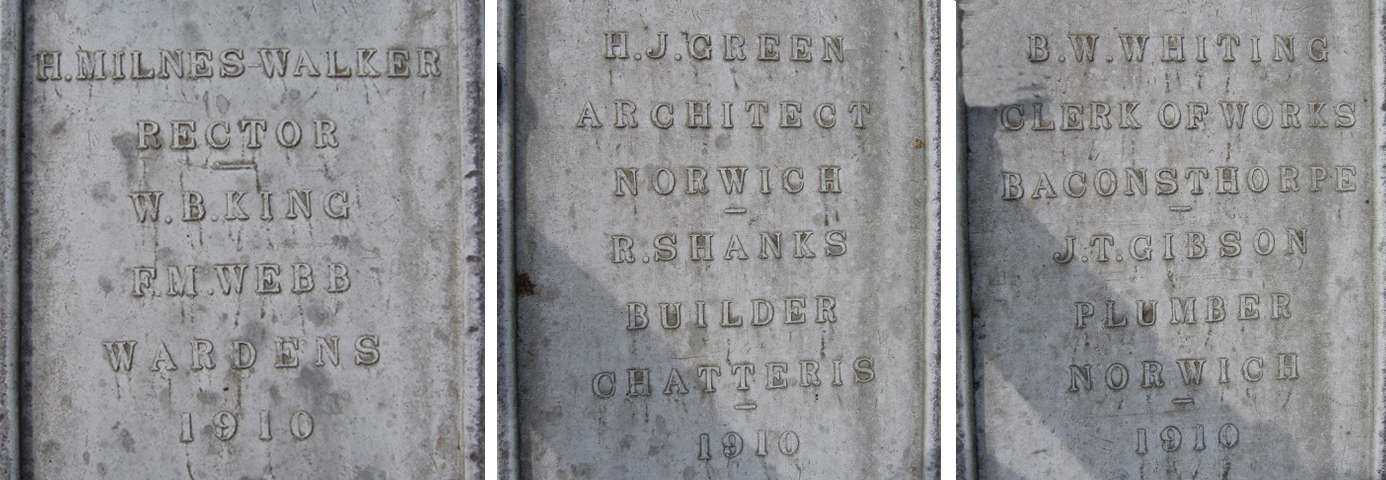
Sadly, in 2017, there were two instances of lead being stolen from the roof. Although the thieves were caught and sent to prison the lead was not recovered. In 2018 St Mary’s Church was awarded a Heritage Lottery Fund grant for 70% of the costs of repairing roof with various fund-raising efforts raising the remaining 30%. Work commenced on the roof repairs in 2018.
Thanks to Pete Marra for submitting these pictures of the inscriptions in the lead that was stolen from the north aisle of the church. As far as we are aware these are the only pictures of the inscriptions.
Village School History
What is now the village hall used to be Baconsthorpe Primary School. Opened in 1816, one year after the battle of Waterloo, the children of Baconsthorpe and Hempstead were taught here. It was built mainly by public subscription with those who were unable to contribute financially giving their labour for free. The stone used came from a quarry 2.5 miles away and building materials that were imported from Belgium were collected from, what was then, Cley Port.
It was one of the first National schools in England. National schools were founded by the National Society for Promoting Religious Education. These schools provided elementary education in accordance with the teaching of the Church of England.
The first headmaster was John Beales and in 1817 there were more than 100 pupils, the girls were taught needle work and knitting. When the school closed in July 1983 there were 22 pupils and Eddie Powell was the headmaster.
After the school was closed, this Grade II listed building became the Village Hall ensuring that it continued to have an important role in Baconsthorpe village.
Please click the thumbnail to view image
Village History
Baconsthorpe Rolls of Honour
Please click here for a brief summary of the Rolls of Honour for the men from Baconsthorpe who fought in the First and Second World Wars.
Extract from History, Gazetteer & Directory of Norfolk by William White 1864
Baconsthorpe is a village and parish, 2 ½ miles E by S of Holt, comprising 328 inhabitants and 1360 acres of land. J T Mott, Esq, the Marquis of Lothian, Hudson Gurney Esq, and others have estates here, and the former is lord of the manor. The Rectory, valued in K B at £9, is in the patronage of J T Mott, Esq and incumbency of the Rev John R Feilden, MA. The glebe is 12 acres, and the tithes were commuted, in 1842, for £379 per annum. The rectory-house was nearly destroyed by lightning in 1692 and by fire in 1754; after which it continues ruinous till 1770, when it was repaired, at considerable expense, by the rector and parishioners.
The Church (St Mary the Virgin) is a large handsome edifice, which was partly destroyed by the fall of the steeple in 1739, but was thoroughly repaired and beautified, chiefly at the expense of the Rev Wm Hewitt in 1779. It is of perpendicular architecture, and comprises nave with aisles, chancel, porch and squire tower with one bell. The font is very handsome and was given by Mary Ann Stuart in 1779. In the south aisle there are two stained glass windows, inserted in 1863, in memory of John Clarke and his wife; and a handsome new window has recently been put in the south wall of the chancel by John Hales, Esq of Holt. The east window has been filled with stained glass in memory of the Rev J A Partridge, the late rector, who died in 1861; and the church has been restored at the expense of the present incumbent. Here are several fine monuments and brasses of the 16th century.
On the 21st May 1863, some miscreants broke into the church, and after burning the large bible and prayer book and many valuable papers and carried off the altar cloth, the cushions of the pulpit and reading desk, and various other things, and have unfortunately never been discovered.
Here is a small Wesleyan Chapel, built in 1863. The manor was long held by the Bacons, one of whom was John Bacon, the learned and “Resolute Doctor,” who died in 1346. From them it was passed to the Heydons. Sir Henry Heydon built the old Hall, except the large centre tower, about the year 1495; but the whole is now in ruins, and the more modern hall is occupied by a farmer. Here is a commodious School, built in 1816; and the poor have £5 a year out of land left by Thomas Newmanin 1698.
Post Office at T Rump’s. Letters desp. via Holt at 2.30pm.
Everett Mark, victualler, Jolly Farmers
Fielden Rev John R. M.A. rector and chaplain to Marquis Cholmondley, Rectory
Rowe Matthew, parish clerk
Rump Theoph & Adelaide, Natl School
Silence James, joiner and carpenter
Ward Robert, wheelwright
Warnes Gregson, grocer
Whiting John, builder and wheelwright
Whiting Jon, jun blacksmith
Farmers – Bomfrey James, Everett Stephen (and machine owner),
Girling Richard, Harrison Robert, Howell John, King Richard, Mack Eliz.
Hall – Rallison Nicholas, Seaman Geo Rd, Ward Rt (and grocer), Adams James, Fisher Phillip, Mann John.
Roman Coins Haul
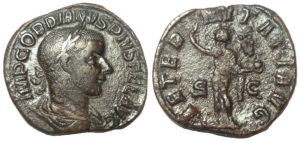 In June 1878 a man ploughing land belonging to John Mott hit a Roman earthen ware jar called an olla. The olla was 14 inches high and 36 inches in circumference. The outside was ash coloured and the inside showed the horizontal marks of a lathe. The olla was made from a strong, coarse and gritty red paste with occasional black streaks caused by insufficient firing. The top of the olla was smashed by the plough exposing approximately nine thousand Roman coins.
In June 1878 a man ploughing land belonging to John Mott hit a Roman earthen ware jar called an olla. The olla was 14 inches high and 36 inches in circumference. The outside was ash coloured and the inside showed the horizontal marks of a lathe. The olla was made from a strong, coarse and gritty red paste with occasional black streaks caused by insufficient firing. The top of the olla was smashed by the plough exposing approximately nine thousand Roman coins.
The date of the burial of the coins is thought to be between 271–272AD. This was deduced as the coins dated from 238-271AD. From 271-272AD Roman troops fleeing from Chalon in Champagne landed in Norfolk. Many of the coins where in such good condition that when the verdigris was removed the surface of the coins was perfect. The coins were denarii and antoninianil, silver or metal dipped in silver. The earliest coins were from Gordain 238AD and the latest from Aurelion 271AD.
John Mott kept five hundred coins, some went to Norwich Castle Museum and the remainder were dispersed around the country.
Conqueror’s Survey 1086
The Conqueror’s Survey shows that there were two lordships in the village. One belonging to Roger Bigot and the other to a Dane named Guard. There was also land owned by Roger Gernon. Soon after the survey a Norman called Grimbald owned both lordships. He was related to Willian de Warren, Earl of Surrey and was an ancestor of the Bacons. Thomas Bacon gave his name to the village to recognise it from other thorpes.
With the two lordships there were two manor houses. One is near the church and originally built by Newman in the 17th century. The pillars supporting the porch come from the castle. The other, Woodhall Manor, was on the site now known as Baconsthorpe Castle.
Wesleyan Chapel

In 1844 the Wesleyan Chapel was built. There are no records about the chapel and it was closed in 1958 when there were between nine and twelve worshippers. The Methodist Church sold the chapel in 1982 and it remains private residence.
Agriculture
When agriculture was thriving many people were employed in the village. White’s Norfolk (1845) tells us that the village had two blacksmith’s, three boot makers, a saddle maker, a joiner, nine farmers, numerous farm labourers, a grocer, a draper and a school master.
After 1900 when farming had become mechanised White’s Norfolk (1925) tells us that there were two builders, a market gardener, a post office, a shop, a blacksmith, a carpenter, a police constable, a school mistress, three farmers and eight farm labourers.
Baconsthorpe used to have a large number of sheep. Sir Christopher Heydon is said to have entertained sixteen of his shepherds. Once farmers realised that more money could be made from arable farming the sheep disappeared and were replaced with crops. The last shepherd in Baconsthorpe was William Catar from Hall Farm who died in 1907.
